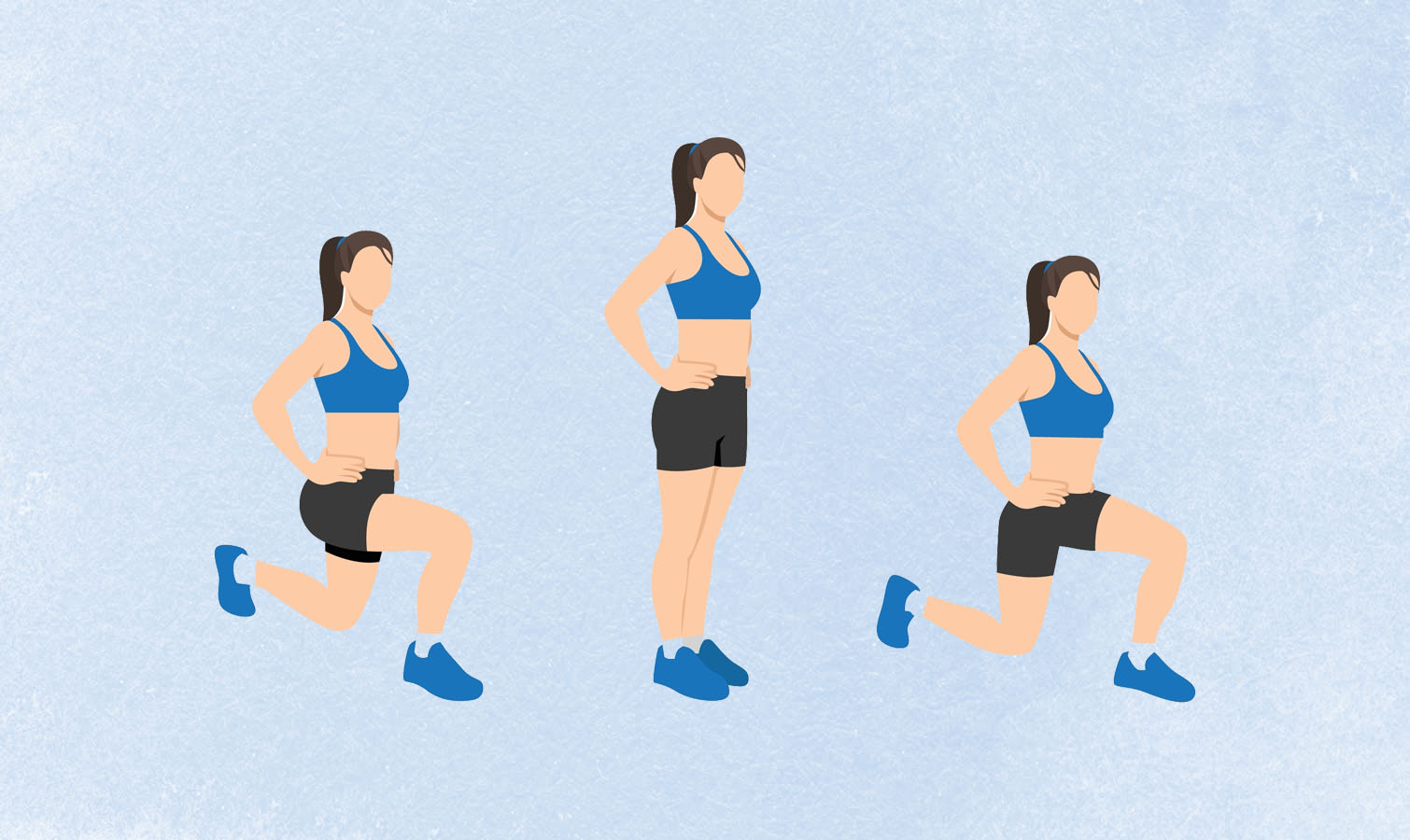I did 50 walking lunges every day for a week — here’s what happened to my legs
This move takes you a step forward, again and again

If you’ve ever followed a fitness program that included leg exercises, you’ve almost certainly performed the lunge. It’s a staple of “leg day” and an admirably adaptable one, at that. I have found it to be an extremely effective move for building leg strength, but when my editor challenged me to do 50 walking lunges every day for a week, my first thought was, “But my home isn’t that big.” Of course, I could’ve simply left my house and done the move in a park, but the weather has been terrible and no one likes being laughed at that much. A beach would have been ideal, but I live many, many miles from the coast — and no one likes being laughed at that much. So I did the move at home, back and forth and back and forth, like a sentry who’s trying to liven up his day.
What is a walking lunge?
The lunge in all its variations works almost every major muscle in your lower body, and the walking version throws in some cardio, too. For the basic move, you take a step forward with one leg, bend both knees you create 90-degree angles with your legs, return to start position and repeat, or change legs. It primarily targets the quadriceps and glutes, but also works the hamstrings, hip flexors, and calves. To do it properly you’ll need to call on your core muscles, too, so you maintain an upright torso. With the walking version, you’re lunging and moving forward, which is harder than it sounds and more effective than it looks.
How to do a walking lunge

- Stand tall, with your feet shoulder-width apart. You can place your hands on your hips or let them hang by your sides. There’s a good chance you’ll need them to maintain balance at some point, by waving them frantically or touching a nearby wall.
- Engage your glutes and step forward, and slightly out (as in, not directly over your knee), with your right leg, landing heel first (this will help protect your knee).
- Maintain an upright torso as you bend your knees to create right angles with both legs. Do not allow your front knee to slide out past your toes and make sure your back knee doesn’t hit the ground.
- Drive off with your right heel and bring your left leg forward. Repeat the move with the left leg to continue. Look, you’re walking! And lunging! Aim for 20 to start and see how you feel. If you suffer from knee pain, please consult a medical professional before attempting this move, because it really puts those hard-working joints through their paces.
I did 50 (or more!) walking lunges every day for a week and here’s what I learned
Any exercise that involves movement, even up and down a hallway, is all right by me, so I enjoyed this one immensely. I learned that my hallway is 10 lunges long — front door to the kitchen sink, actually — or eight if I go for a longer step to stretch out my hip flexors. I also learned that my knees will not hesitate to let me know when I’m asking too much of them, and that I have developed the wisdom to listen to what they’re saying.
Limitations exist for a reason
I was concerned that the length of my hallway would be a problem; I thought that having to turn after 10 lunges and return the same way would interrupt my fluid movement. Luckily, my lunging was not as effortless as I’d imagined — I was thankful for the narrowness of the hall, which meant I could stretch out an arm to steady myself during my occasional wobbles — and the limited space meant I could count out the same number of lunges each times, which ensured they were the same length. In fact, this constraint is, I think, a good thing. If you’re outdoors, you might be tricked by tiredness into varying the length of your lunges, or get carried away and lunge into a tree. Or the sea.
On day one, the first 30 were fine, and I was, not for the first time, lulled into a false sense of competence. By the fiftieth, however, my quads were hollering and I had slowed down considerably. I was also, to my surprise, out of breath. The move works a lot of muscles, but, as far as I’m concerned, it’s the quads that take much of the strain; they felt stronger at the end of the challenge. The other chief benefit I noticed after the week was more flexibility in my hips. It’s also an excellent warm-up before a run.
If your body starts talking to you, listen to it
By day four, I was up to 60 lunges, but as I approached the end of my hallway for the final time, my right knee began to complain. I shortened my lunge, which helped a little, but I decided that the next step was to take a day off. As the years go by, I pay more attention to what my body is telling me. It’s not an alarmist, prone to scaremongering darts of pain just for the hell of it, so I always pay attention if something feels off.
A few friends of mine have had to give up running because of knee problems and I do not intend to join them, so I had no twangs of conscience about hitting pause. And it worked. After a day’s rest, I hit 70, though I was careful to ensure every lunge took the knee slightly out, rather than sticking to the midline. This move can be hard work if you do enough reps, so watch for lapses in form as you begin to tire. Your knees will thank you by staying quiet and strong. Never forget — a lot hinges on them.
Get instant access to breaking news, the hottest reviews, great deals and helpful tips.
More from Tom's Guide
- Forget crunches — 5 exercises that target the lower abs
- Forget dumbbells — 3 standing ab exercises to sculpt your core using a resistance band
- I did 50 frog squats every day for a week — here’s what happened
John is a writer and editor based in London. He was worked for magazines such as Runner’s World, Men’s Health, Women’s Health and Cosmopolitan. A keen runner, what he lacks in ability he makes up for with enthusiasm and excuses.

